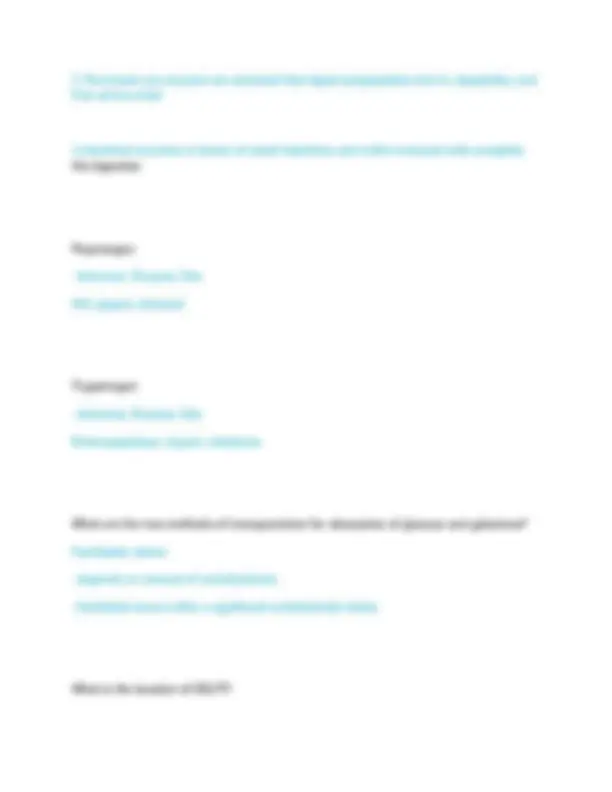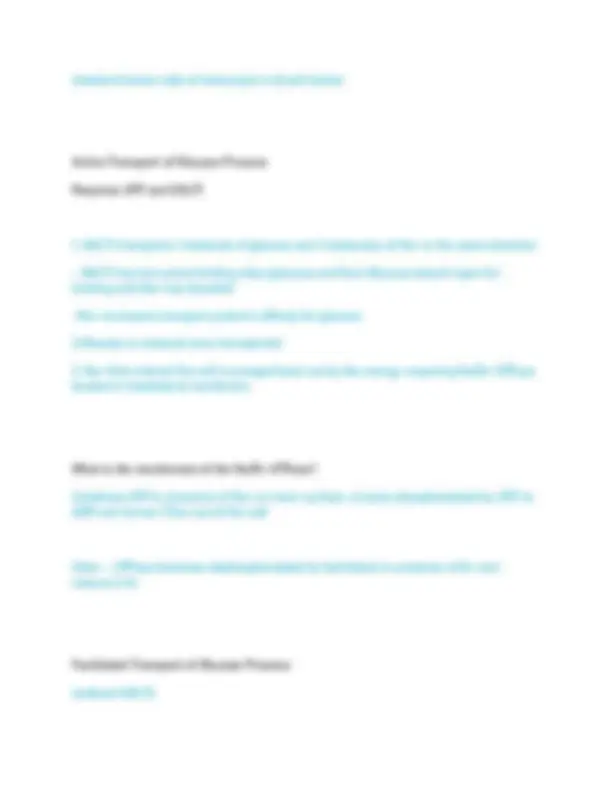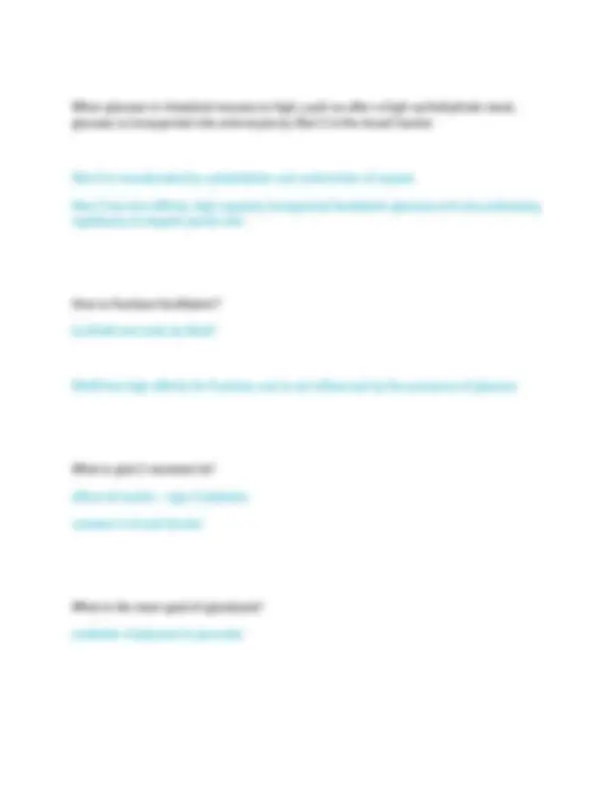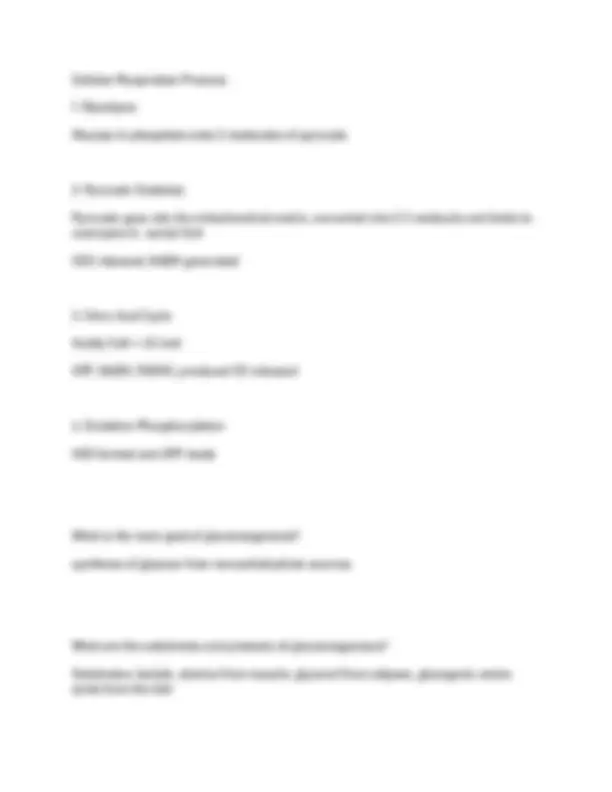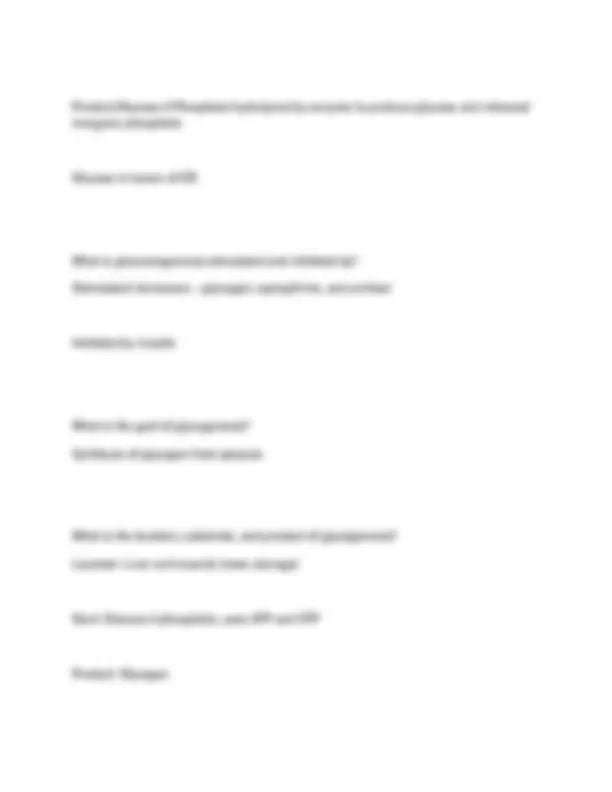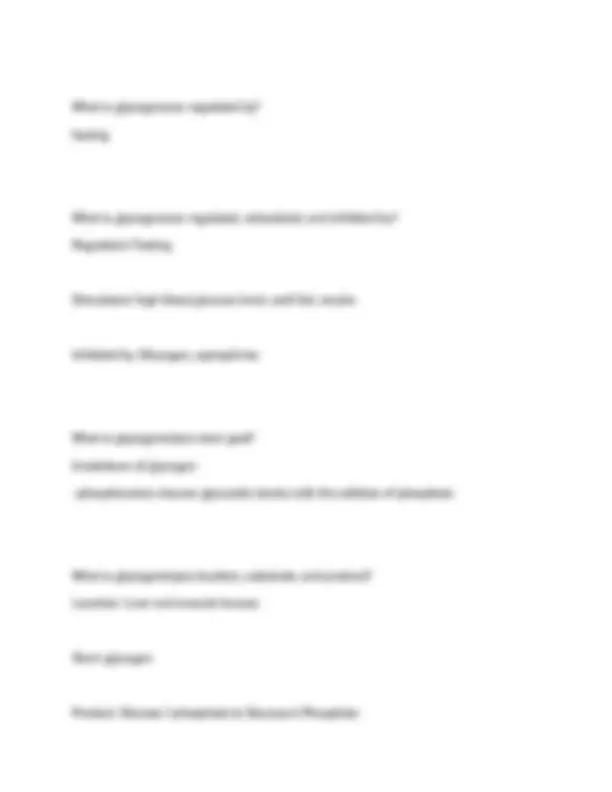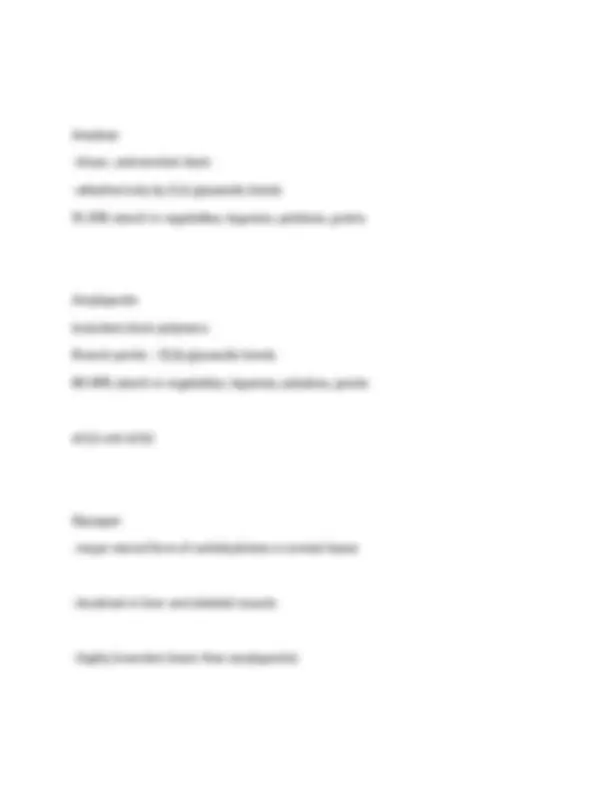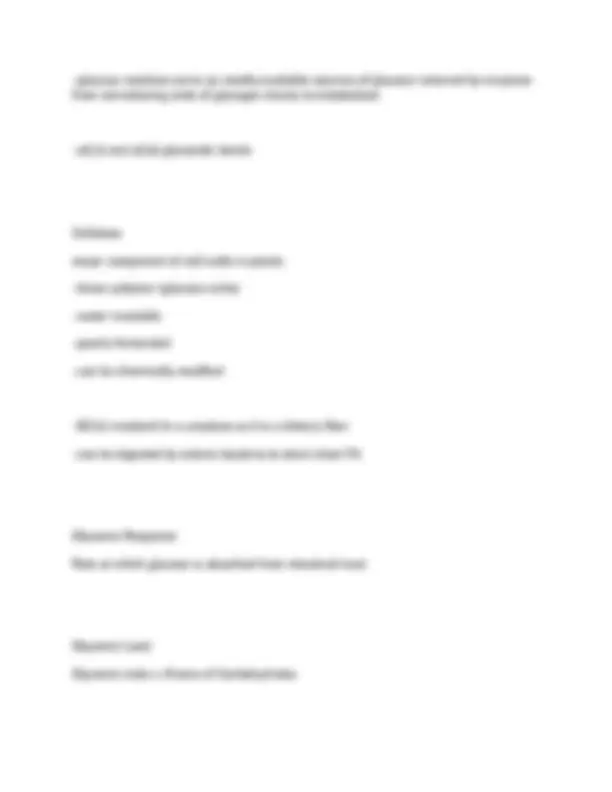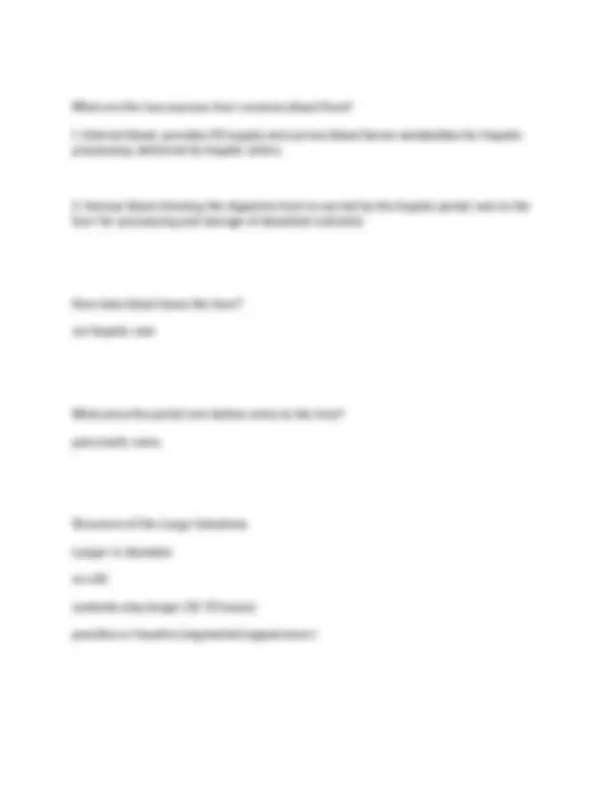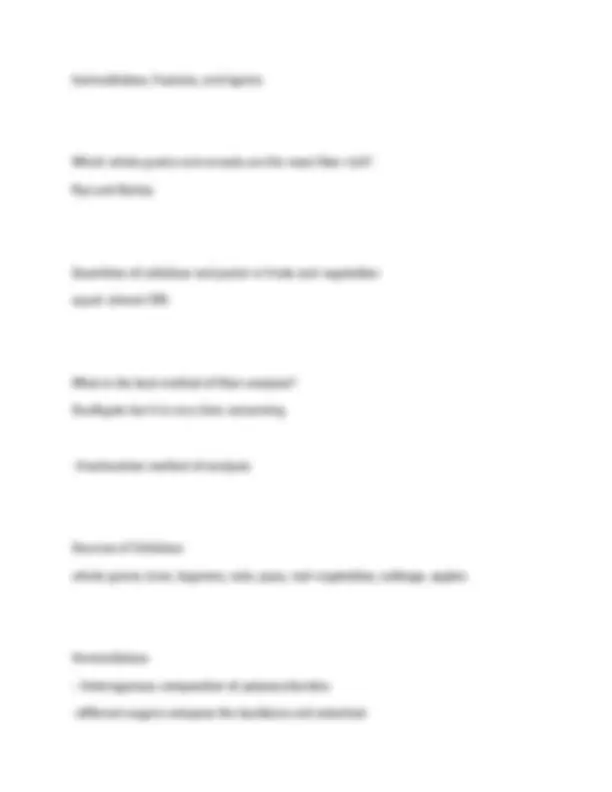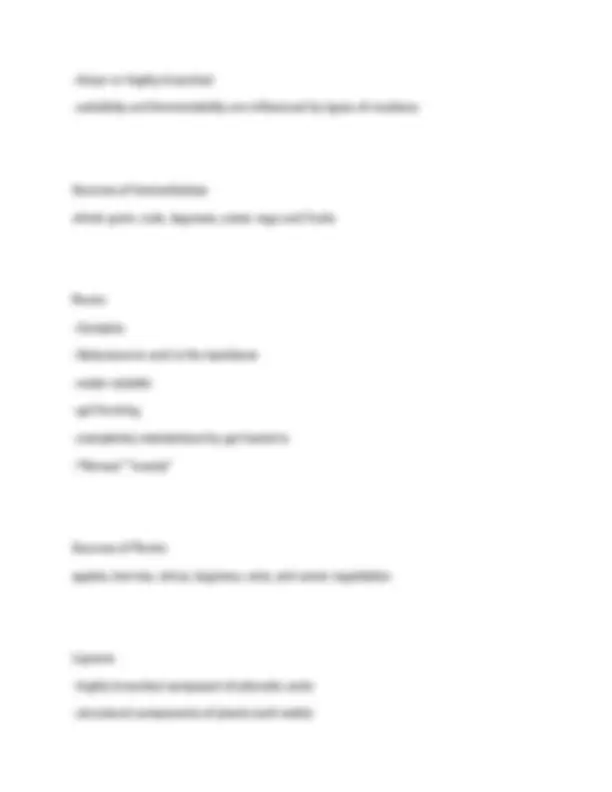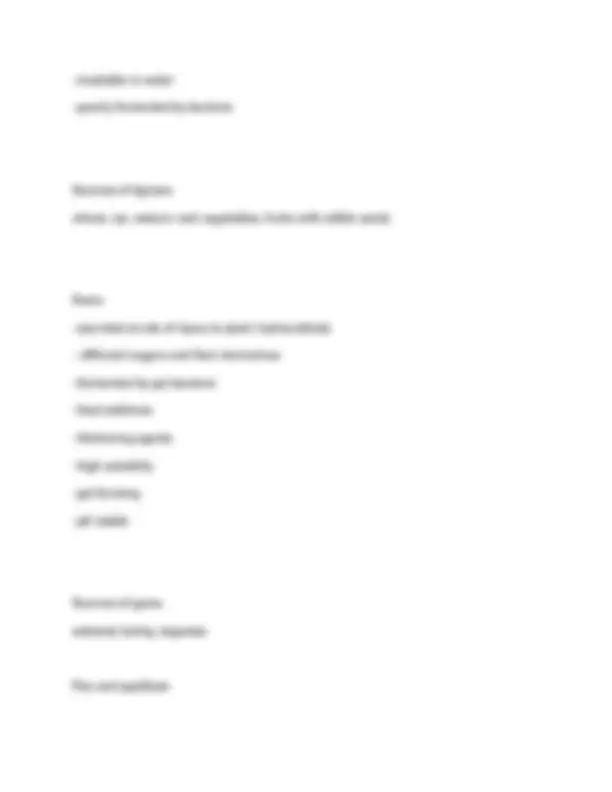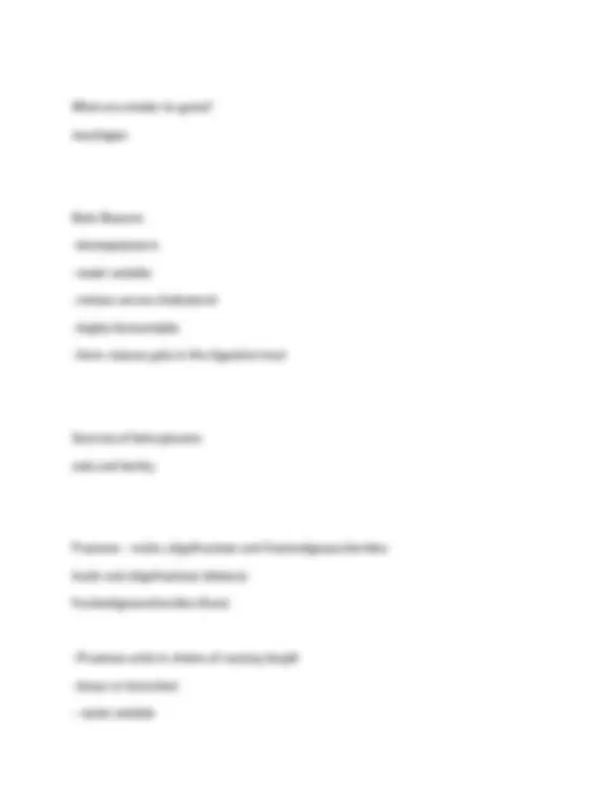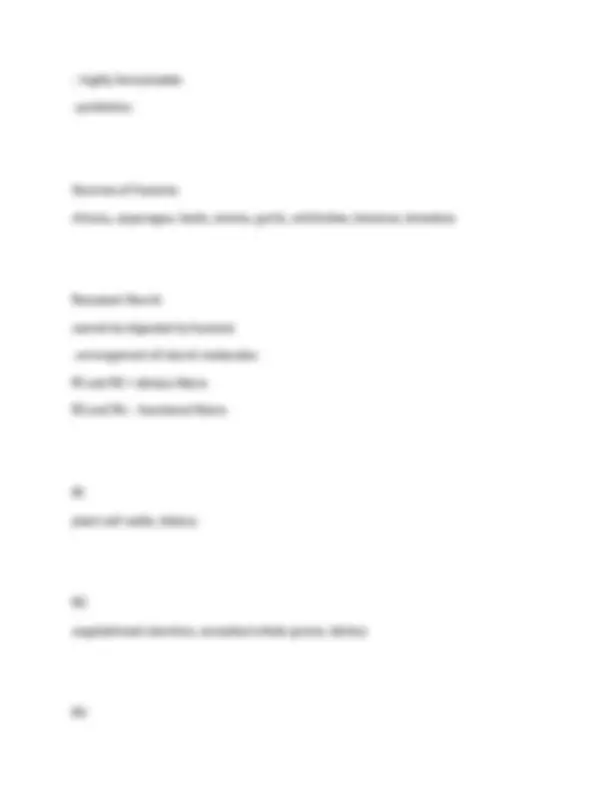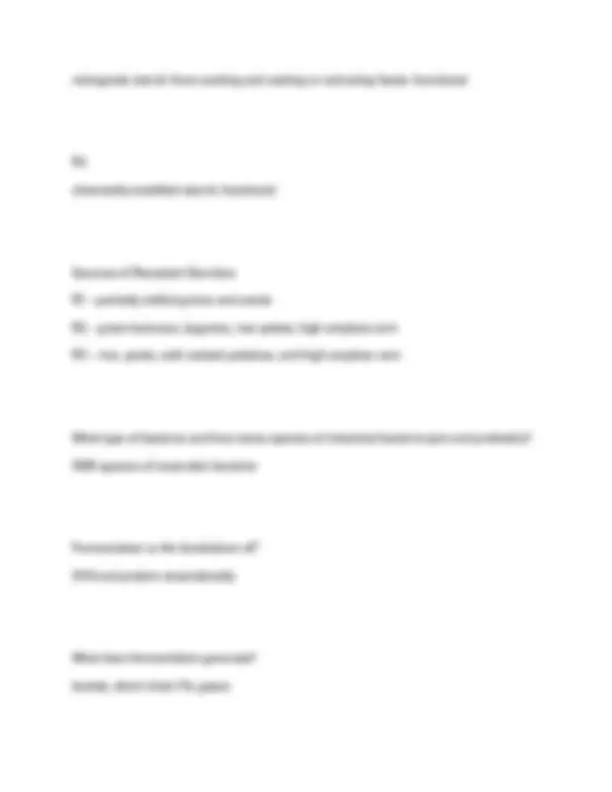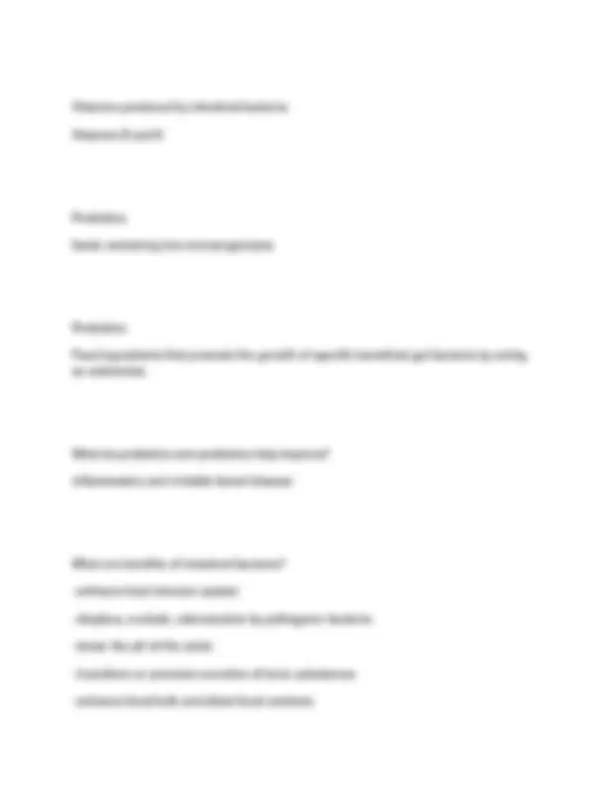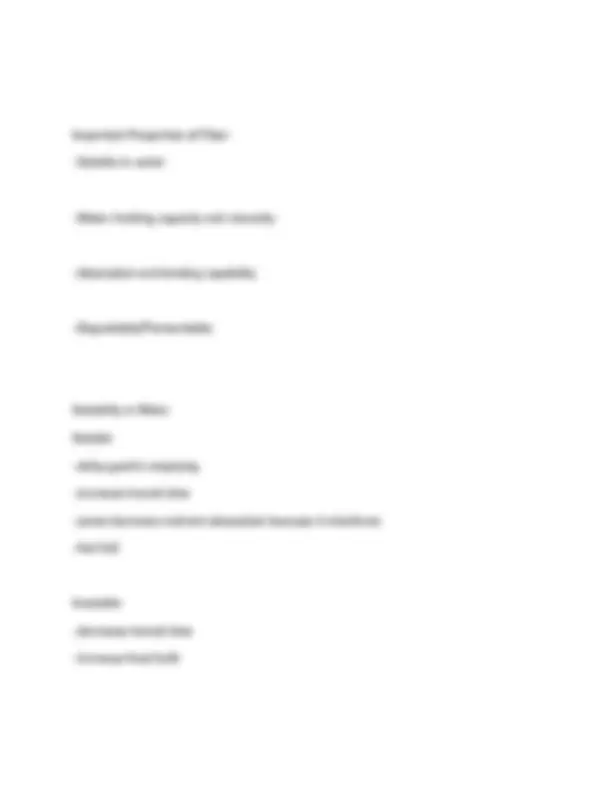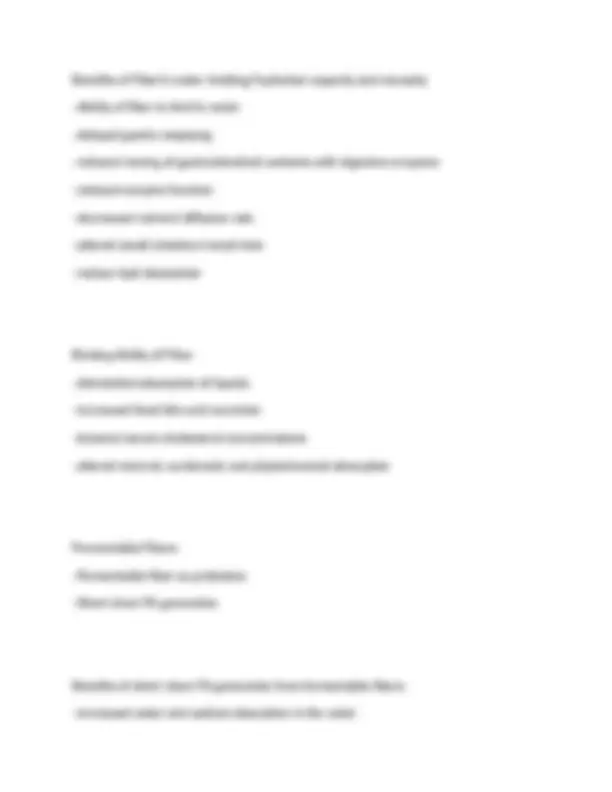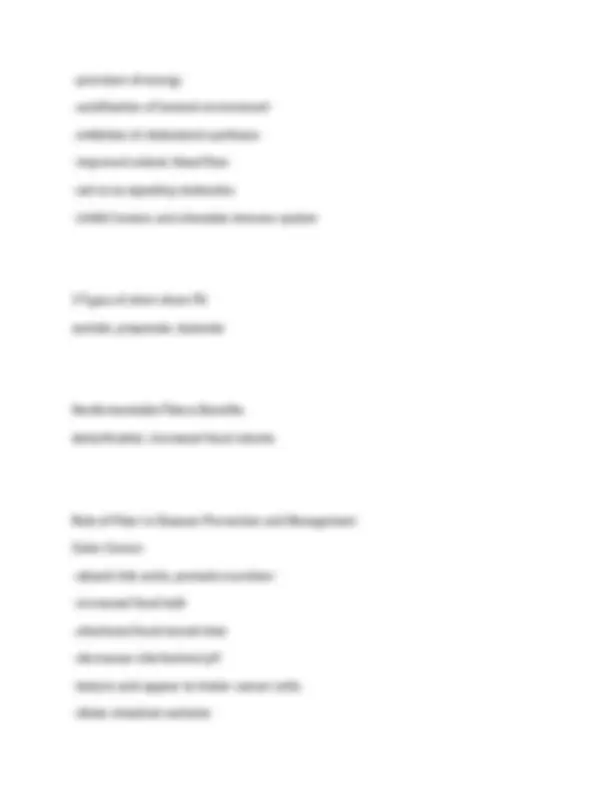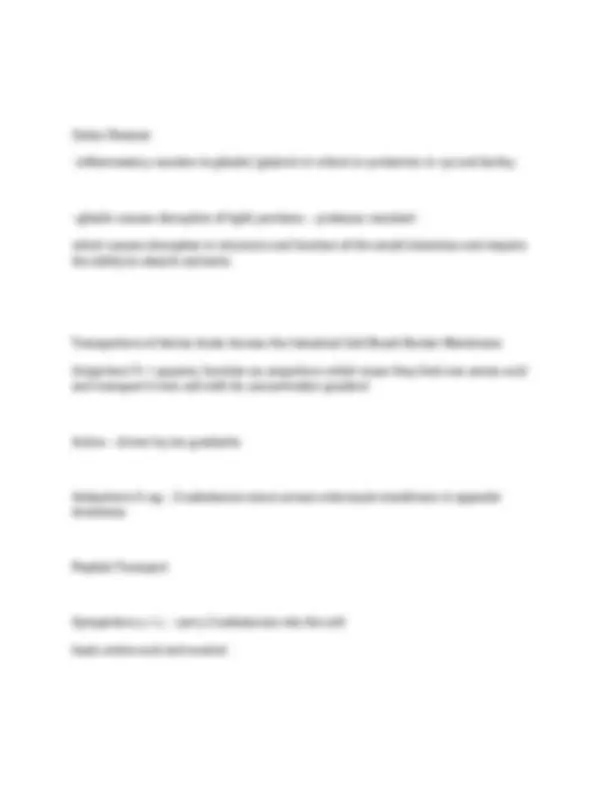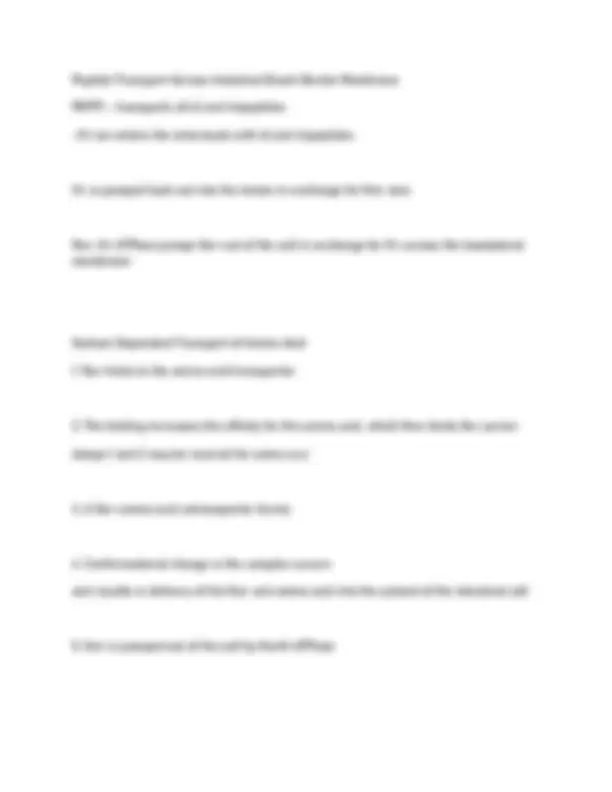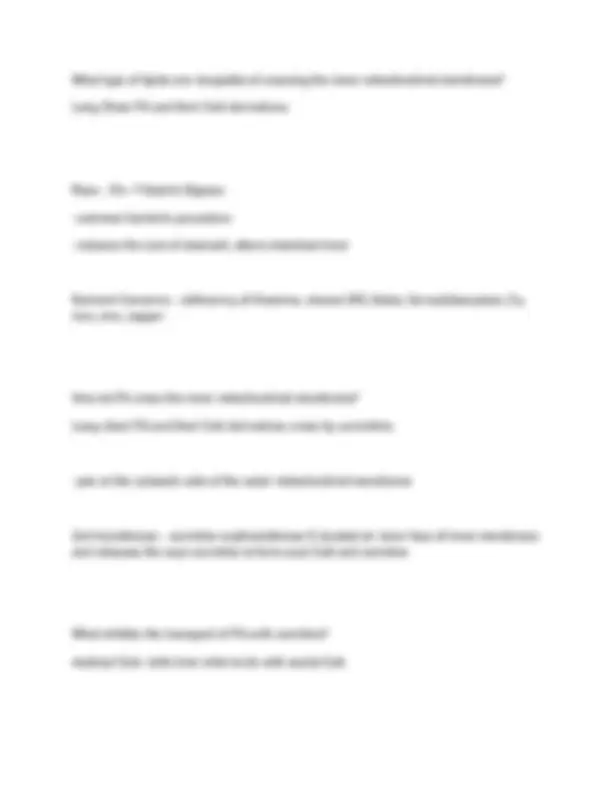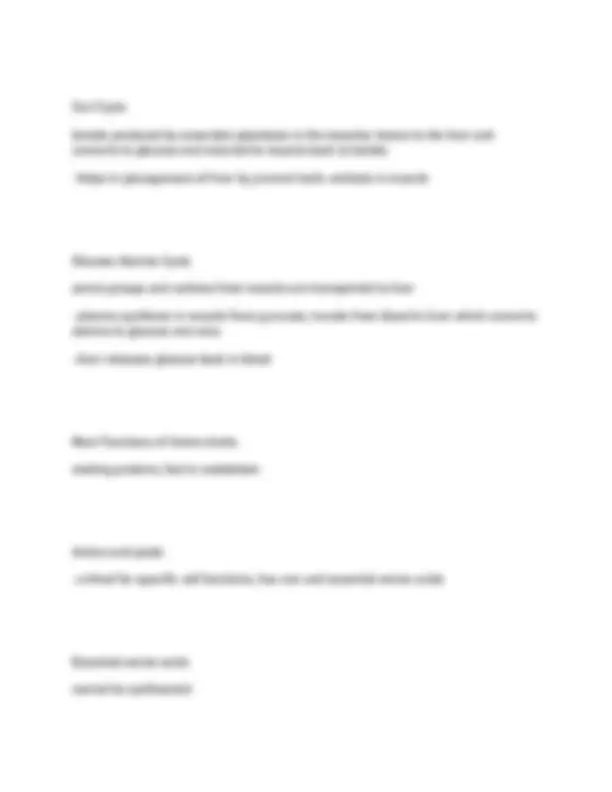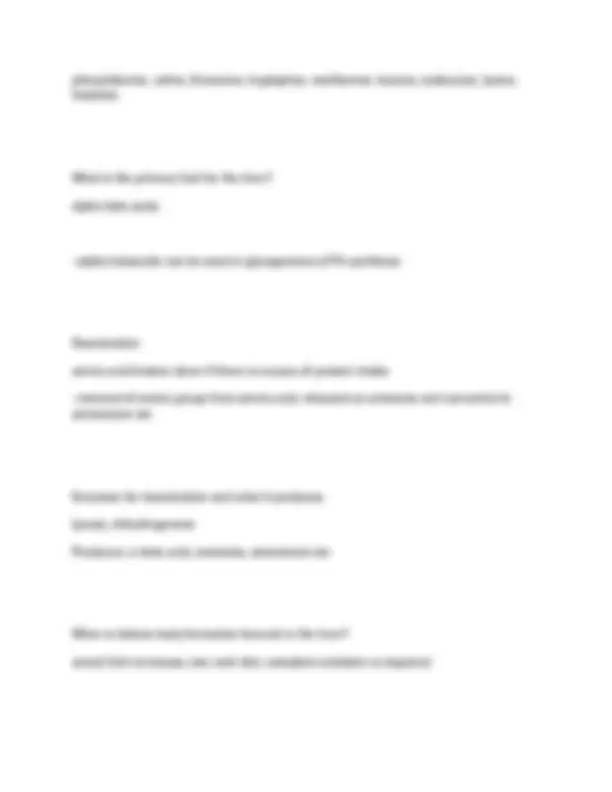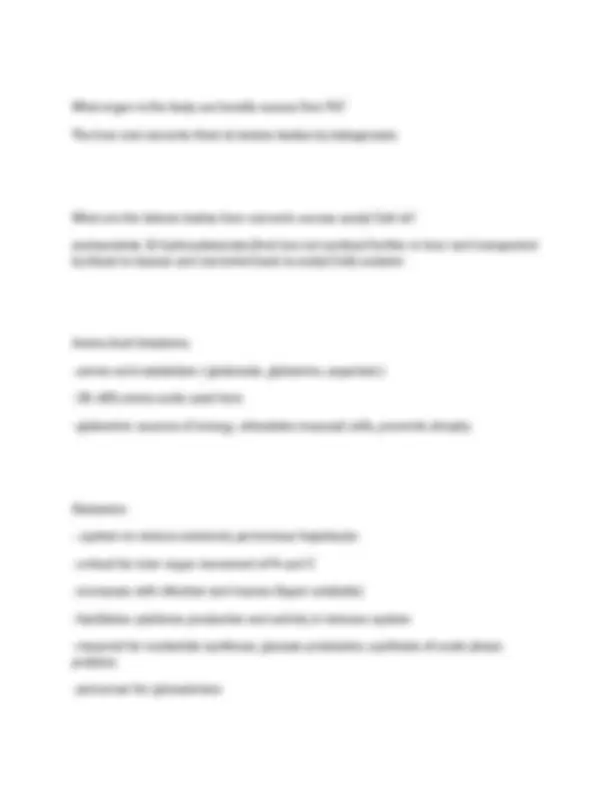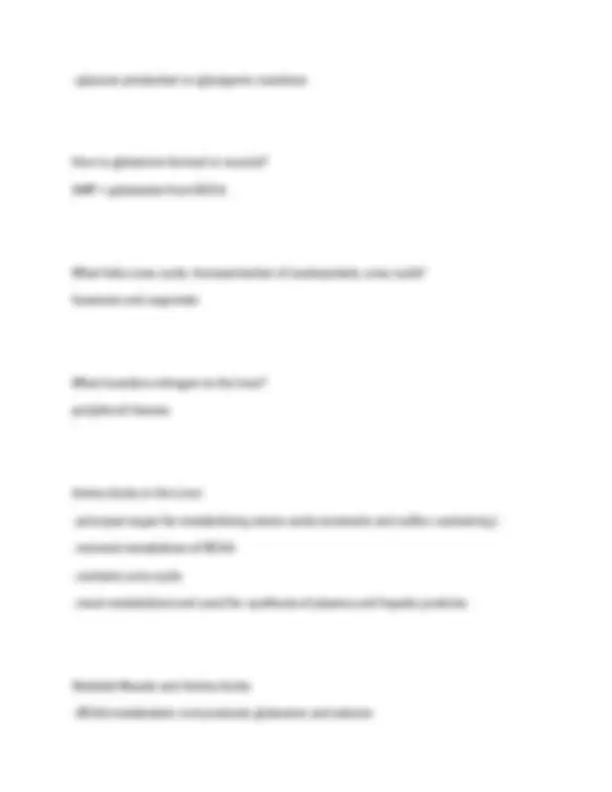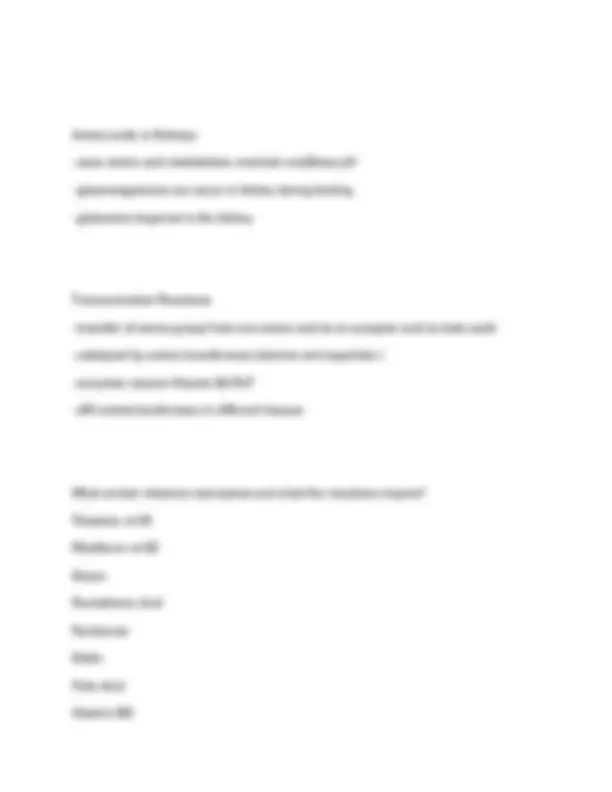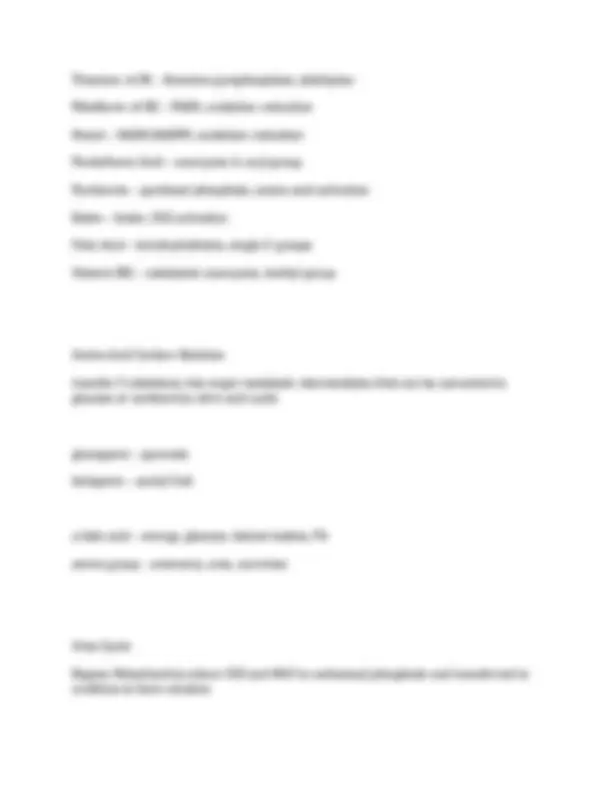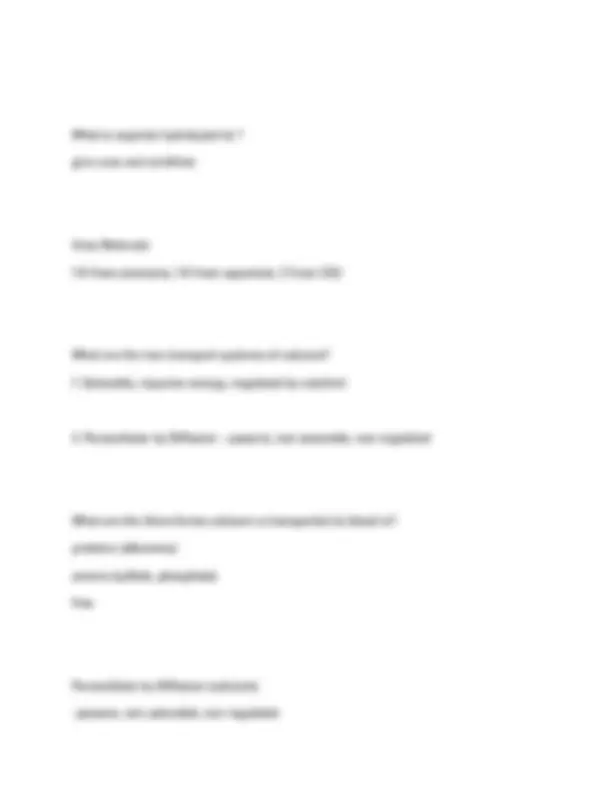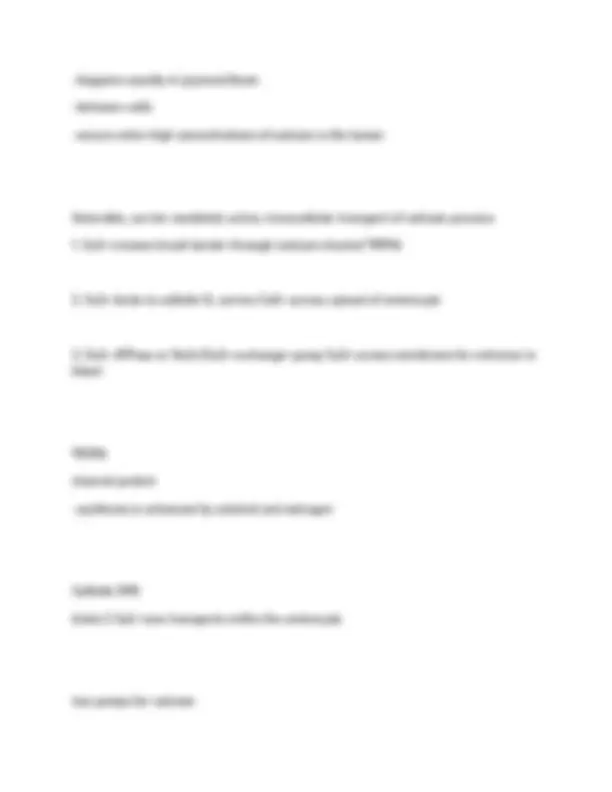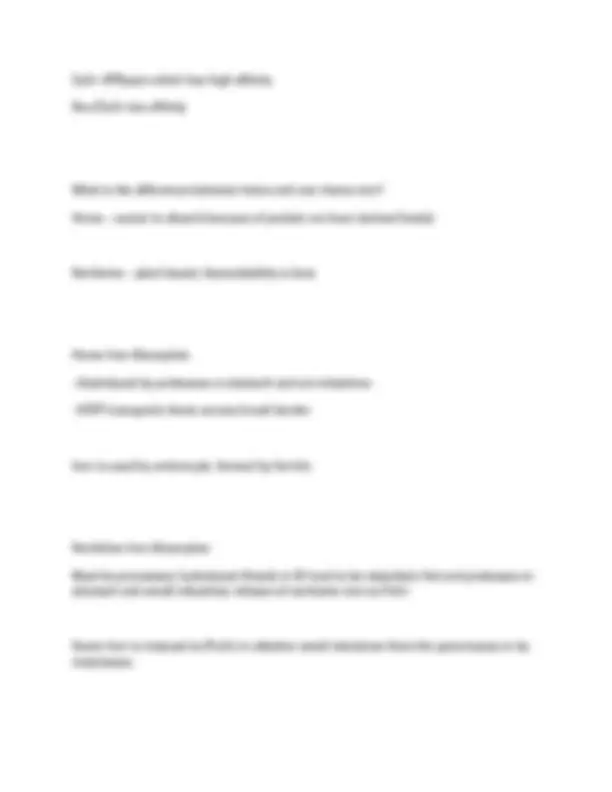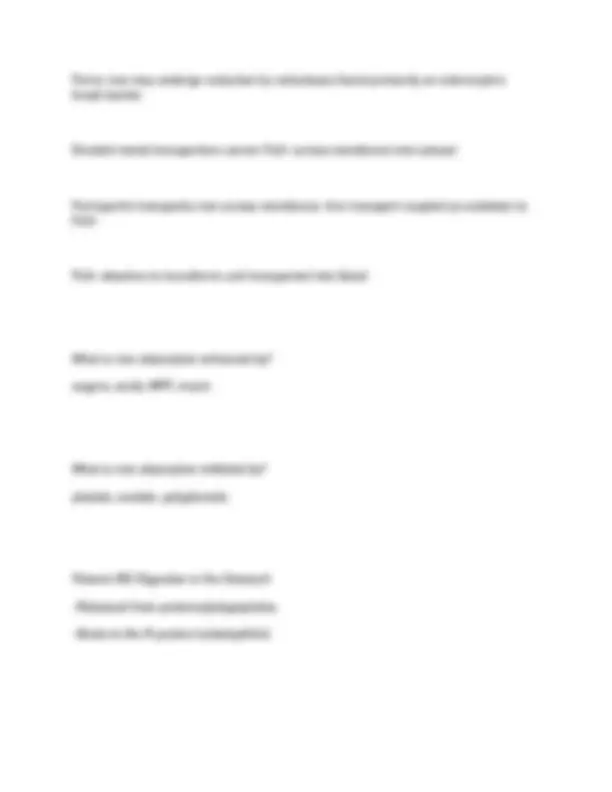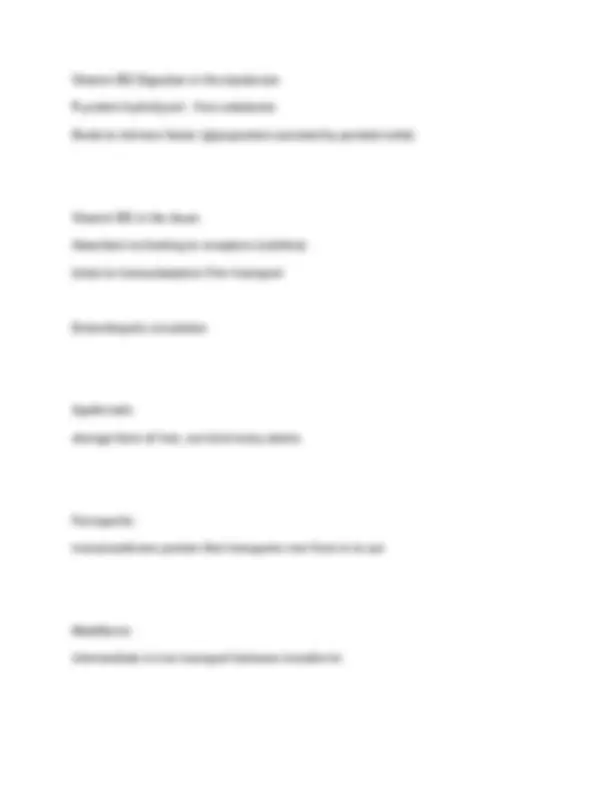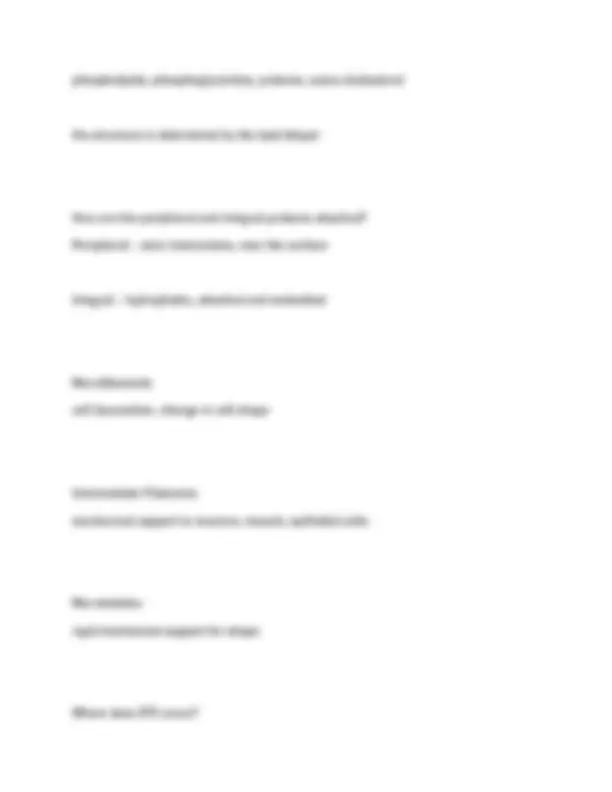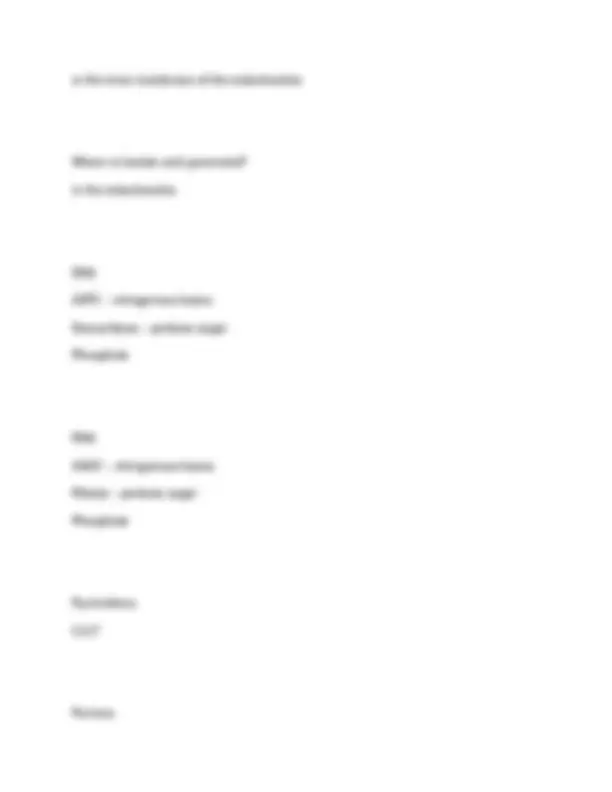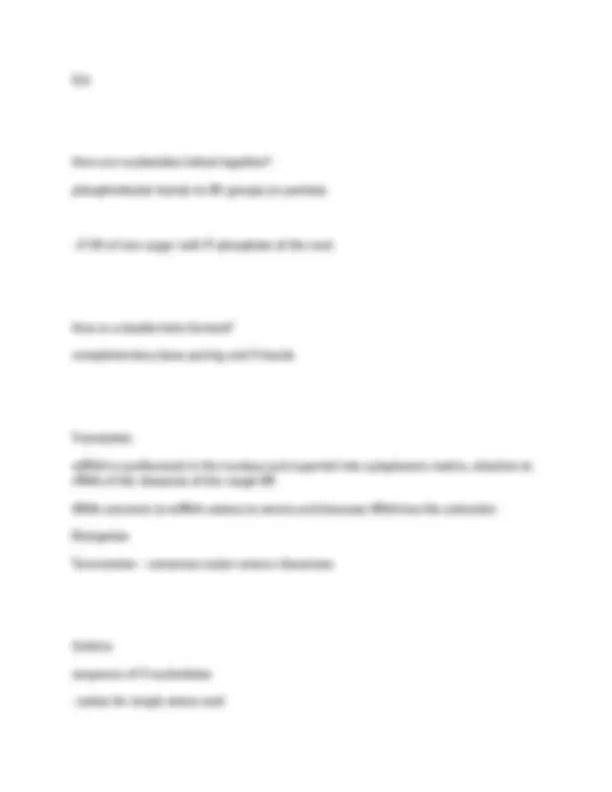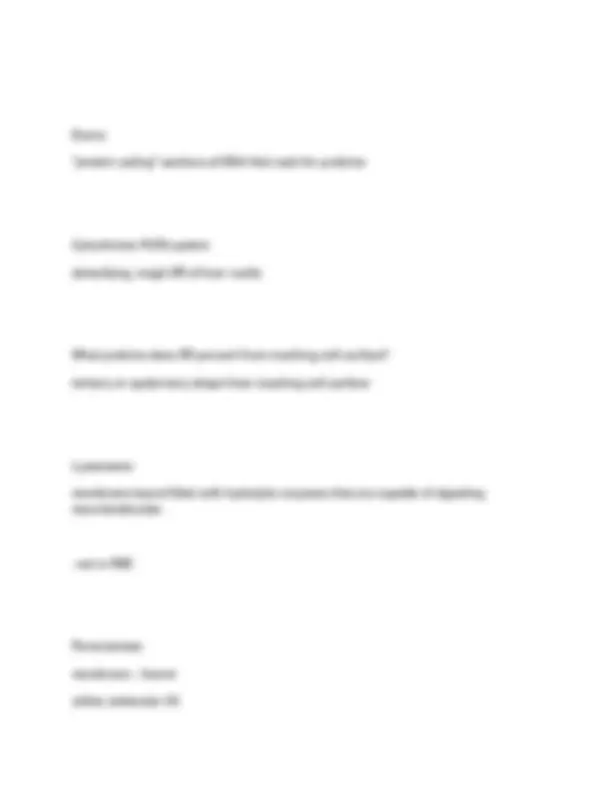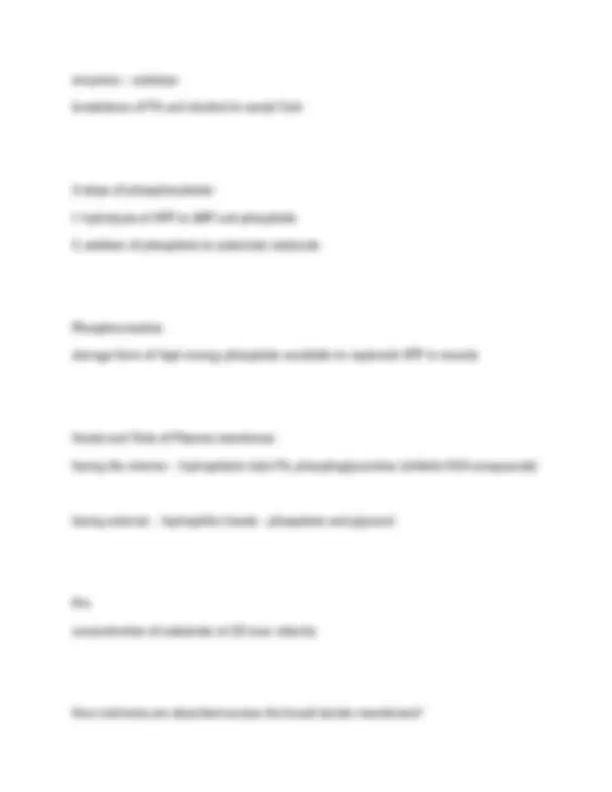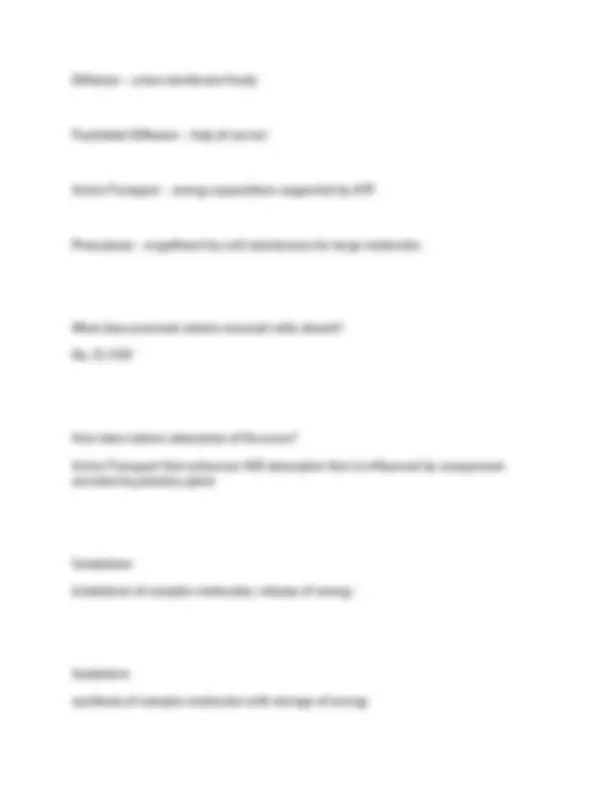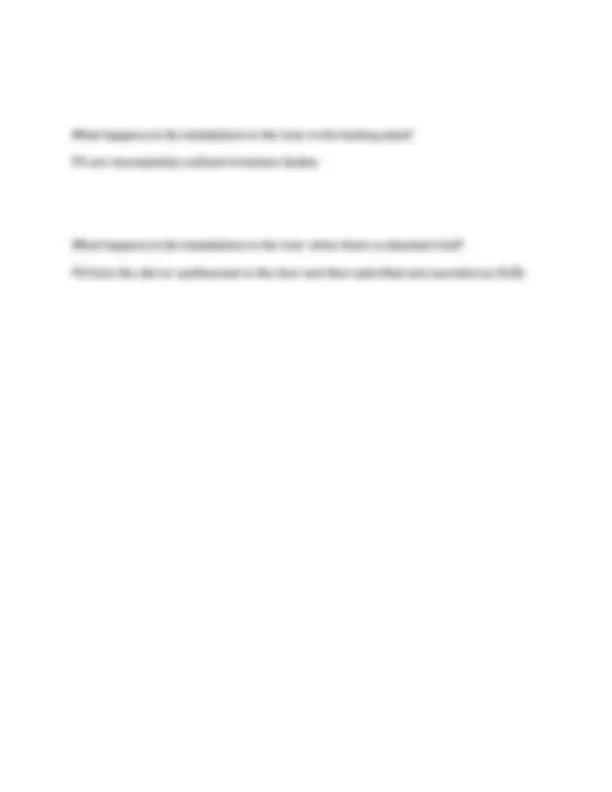Download NSC 419 Advanced Nutrition Exam 1 Questions with Correct and Verified Answers 100% Rated and more Exams Nursing in PDF only on Docsity!
NSC 419 Advanced Nutrition Exam 1 Questions
with Correct and Verified Answers 100% Rated
A+ Graded-GCU
What happens during carbohydrate digestion in the mouth? Salivary a amylase hydrolyzes a(1,4) glycosidic linkages of amylopectin and amylose What happens during carbohydrate digestion in the stomach? Nothing. Salivary amylase continues in the stomach until gastric acid inactivates it due to the low pH. What happens during carbohydrate digestion in the small intestines? Digestion and amylose and amylopectin
- pancreatic a-amylase in duodenum/jejunum hydrolyzes a(1,4) glycosidic linkages
- oligosaccharides/maltose broken down by brush border, leaving dextrins
- a-dextrinase hydrolyzes the remaining a(1,6) glycosidic linkages of amylopectin What happens in the mouth and stomach during fat digestion? Mouth: Lingual lipase produced in salivary glands released by serous glands
Stomach: Gastric lipase produced in the stomach
- Most are used in infants.
- Medium and short FA in sn-3 position What happens in the small intestines during fat digestion? Phase 1: Emulsification (bile) Phase 2: Pancreatic lipase produced in pancreas for enzymatic digestion Glycerol, MAG, long chain FA are absorbed into the enterocyte Partially hydrolyzed lipid emulsion leaves stomach and enters duodenum as small lipid droplets. Bile salts mix from stimulated CCK and secretin Micelle = soluble form to be absorbed into enterocyte What is the protein digestion process?
- Gastric juices released, HCl denatures proteins and converts pepsinogen into pepsin (hydrolyzing peptide bonds)
- Partially digested proteins enter the small intestines, CCK and secretin are released which stimulate the pancreas to release pro-enzyme and bicarbonate in intestines
intestinal lumen side of enterocyte in brush border Active Transport of Glucose Process Requires ATP and SGLT
- SGLT1 transports 1 molecule of glucose and 2 molecules of Na+ in the same direction
- SGLT1 has two active binding sites (glucose and Na+) Glucose doesn't open for binding until Na+ has bounded
- Na+ increases transport protein's affinity for glucose 2.Glucose is released once transported
- Na+ that entered the cell is pumped back out by the energy-requiring Na/K+ ATPase located in basolateral membrane What is the mechanism of the Na/K+ ATPase? Combines ATP in presence of Na+ on inner surface, enzyme phosphorylated by ATP to ADP and moves 3 Na+ out of the cell Outer - ATPase becomes dephosphorylated by hydrolysis in presence of K+ and returns 2 K+ Facilitated Transport of Glucose Process (without SGLT1)
When glucose in intestinal mucosa is high, such as after a high carbohydrate meal, glucose is transported into enterocyte by Glut 2 in the brush border Glut 2 is translocated by cytoskeleton and contraction of myosin Glut 2 has low affinity, high capacity transported facilitate's glucose exit into underlying capillaries to hepatic portal vein How is fructose facilitated? by Glut5 and exits by Glut Glut5 has high affinity for fructose and is not influenced by the presence of glucose What is glut 2 resistant to? effect of insulin - type 2 diabetes remains in brush border What is the main goal of glycolysis? oxidation of glucose to pyruvate
Product: 2 ATP mol, 10 NADH, and 2 FADH After 1 cycle: 1 GTP, 3 NADH, 1 FADH2, 2 CO2 regenerated oxaloacetate What is the TCA cycle regulated by? ATP and NADH What is the goal of oxidative phosphorylation? Synthesize ATP What is the process of oxidative phosphorylation?
- NADH and FADH2 transfer their e- to molecules at the beg of the ETC and change back
- Along the ETC, e- move from high energy to low energy, releasing energy
- At the end of the ETC, e- are transferred to molecular O2, splits in half and takes up H+ to form H2O
- H+ flow down gradient and back into matrix, pass through enzyme ATPsynthase, flow of protons to synthesize ATP Products: ATP (30-32), H2O, NAD+, FAD
Cellular Respiration Process
- Glycolysis Glucose 6-phosphate ends 2 molecules of pyruvate
- Pyruvate Oxidation Pyruvate goes into the mitochondrial matrix, converted into 2 C molecule and binds to coenzyme A- acetyl CoA CO2 released, NADH generated
- Citric Acid Cycle Acetly CoA + 4C mol ATP, NADH, FADH2, produced O2 released
- Oxidative Phosphorylation H2O formed and ATP made What is the main goal of gluconeogenesis? synthesis of glucose from noncarbohydrate sources What are the substrates and products of gluconeogenesis? Substrates: lactate, alanine from muscle, glycerol from adipose, glucogenic amino acids from the diet
What is glycogenesis regulated by? fasting What is glycogenesis regulated, stimulated, and inhibited by? Regulated: Fasting Stimulated: high blood glucose level, well fed, insulin Inhibited by: Glucagon, epinephrine What is glycogenolysis main goal? breakdown of glycogen
- phosphorylsis cleaves glycosidic bonds with the addition of phosphate What is glycogenolysis location, substrate, and product? Location: Liver and muscle tissues Start: glycogen Product: Glucose 1 phosphate to Glucose 6 Phosphate
What is glycogenolysis regulated, stimulated, and inhibited by? Stimulated by: fasting, glucagon, epinephrine, physical stress Regulated: Glucagon/ Epinephrine Inhibited by: Insulin Pentose Phosphate Pathway Goal Products Processes Production of 5-carbon monosaccharides and NADPH Product: NADPH and pentos e phosphates for synthesis of nucleic acids oxidative process - generates NADPH nonoxidative process - interconverts phosphorylated sugars
Amylose
- linear, unbranched chain
- attached only by (1,4) glycosidic bonds 15 - 20% starch in vegetables, legumes, potatoes, grains Amylopectin branched chain polymers Branch points - 1(1,6) glycosidic bonds 80 - 85% starch in vegetables, legumes, potatoes, grains a(1,4) and a(1,6) Glycogen
- major stored form of carbohydrates in animal tissue
- localized in liver and skeletal muscle
- highly branched (more than amylopectin)
- glucose residues serve as readily available sources of glucose removed by enzymes from nonreducing ends of glycogen chains to metabolism
- a(1,4) and a(1,6) glycosidic bonds Cellulose major component of cell walls in plants
- linear polymer (glucose units)
- water insoluble
- poorly fermented
- can be chemically modified
- B(1,4) resistant to a-amylase so it is a dietary fiber
- can be digested by colonic bacteria to short chain FA Glycemic Response Rate at which glucose is absorbed from intestinal tract Glycemic Load Glycemic index x Grams of Carbohydrates
Absorption/Reasbsorption in the Large Intestines Absorption - sodium, chloride, water Reabsorption - H2O, electrolytes How does blood drained from the colon reach the liver? the portal vein Major Functions of the Large Intestine Energy Salvage - intestinal bacteria and SCFAs, breakdown of carbs Absorption of water and electrolytes
- water absorbed with sodium, chlorides, SCFA's Lipid Metabolism - bile salts deconjugate and returned to liver Synthesis of Vitamins Metabolism and absorption of phytochemicals Dietary Fiber
Nondigestable carbohydrates and lignins that are intat and intrinsic in plants ex. cellulos, hemicellulose, pectin, lignin, gyms, b-glucans, fructans, resistant starches Functional Fiber Nondigestible carbohydrates that have been isolated, extracted, or manufactured and known to have physiological benefits ex. cellulos, pectin, lignin, gums, b-glucan, fructans, chitin, polyols, psyllium, resistant starches and dextrins Wheat Kernel (bran, endosperm, germ Endosperm - starch, some fiber Germ - vitamins, minerals, essential FA, some amount of fiber Bran - 95% of the fiber, especially the walls of the outer layer that have strands of cellulose, hemicellulose, pectins, B-glucans, resistant starch All dietary fibers are functional fibers with the exception of?
- linear or highly branched
- solubility and fermentability are influenced by types of residues Sources of hemicellulose whole grain, nuts, legumes, some vegs and fruits Pectin
- Complex
- Galacturonic acid is the backbone
- water soluble
- gel forming
- completely metabolized by gut bacteria
- "fibrous" "woody" Sources of Pectin apples, berries, citrus, legumes, nuts, and some vegetables Lignans
- highly branched composed of phenolic units
- structural components of plants (cell walls)
- insoluble in water
- poorly fermented by bacteria Sources of lignans wheat, rye, mature root vegetables, fruits with edible seeds Gums
- secreted at site of injury to plant; hydrocolloids
- different sugars and their derivatives
- fermented by gut bacteria
- food additives
- thickening agents
- high solubility
- gel forming
- pH stable Sources of gums oatmeal, barley, legumes Flax and psylllium

